GLEBE TREES AND SHRUBS
Purpleleaf sandcherry (Prunus cistena var Cis)
Full tree or shrub
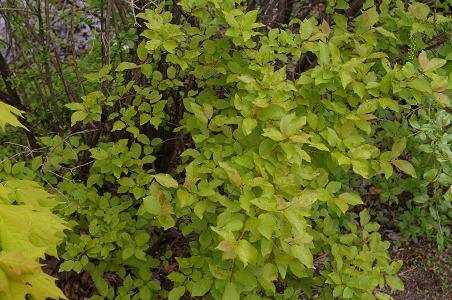 Purpleleaf sandcherry is usually seen as a shrub. But there is a small tree form
as well, called Cis. I think this is it. It can present almost as undergrowth, as here.
Purpleleaf sandcherry is usually seen as a shrub. But there is a small tree form
as well, called Cis. I think this is it. It can present almost as undergrowth, as here.
Leaves
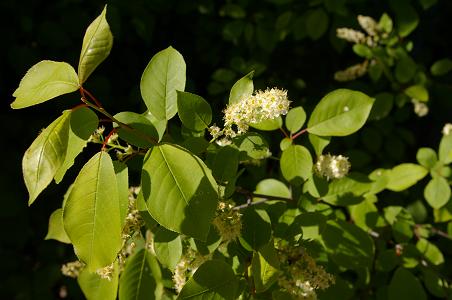 Leaves are more ovate and less lanceolate than other cherries, broadest above the middle.
Leaf stems are often red. There are two white glands on the stipule where it meets the leaf.
Fine teeth. Leaves in alternate arrangement.
Leaves are more ovate and less lanceolate than other cherries, broadest above the middle.
Leaf stems are often red. There are two white glands on the stipule where it meets the leaf.
Fine teeth. Leaves in alternate arrangement.
Flowers
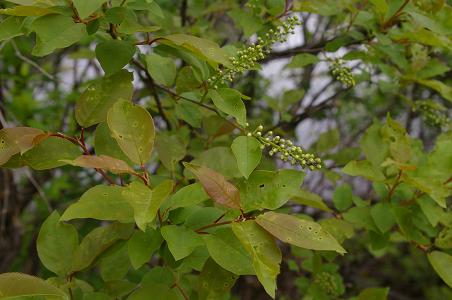
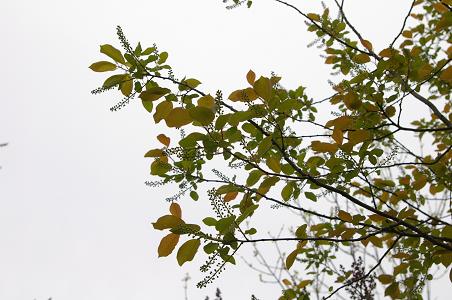 These photos were taken at Brown's inlet, May 10, 2008. Flowers are not developed yet.
These photos were taken at Brown's inlet, May 10, 2008. Flowers are not developed yet.
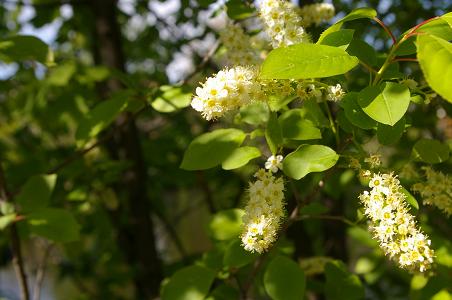 May 24, 2008. Queen Elizabeth Drive east of Bank Street. The flowers are fading.
Flowers not opened as of May 10, 2008 but getting ready, in elongated racemes. Text says they
blossom before/with leaf development, but here leaves are ahead.
May 15, 2008 they were open, looking like fingers of white blossoms.
May 24, 2008. Queen Elizabeth Drive east of Bank Street. The flowers are fading.
Flowers not opened as of May 10, 2008 but getting ready, in elongated racemes. Text says they
blossom before/with leaf development, but here leaves are ahead.
May 15, 2008 they were open, looking like fingers of white blossoms.
Fruit
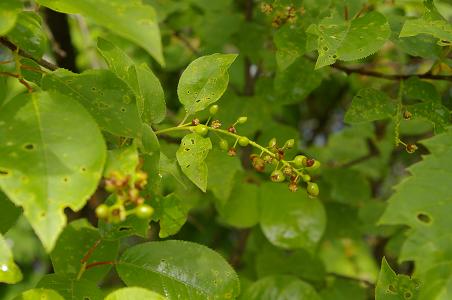
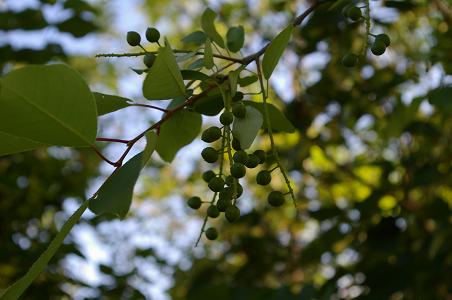 May 31 and June 21, 2008. Developing cherries.
May 31 and June 21, 2008. Developing cherries.
Notes
Buds point away from the branch they are on, and are sharp-tipped. The tree has a rather ragged
appearance from afar, like it needs a haircut.
Purpleleaf sandcherry (Cis) is very common in the Glebe.
Similar species
I find the fruit trees quite difficult to differentiate - ie apple, pear, crabapple, serviceberry
and cherries. When flowering, purpleleaf sandcherry is recognizable by the continuous fingers of flowers, as opposed
to intermittent sprays seen with apple and crabapple. The leaf's long oval shape, wider above the middle, is
distinctive, as are the two glands on the petiole. In some cases, I do not see these glands. Maybe these represent
a different kind of cherry.
Serviceberry flowers earliest of this group, done by early May. The flowers have longer more raggedy petals.
The leaf often has no teeth at the base.
Apple and crabapple flowers seem to have reflexed sepals, while cherries don't.
List of trees and shrubs with alternate, simple, toothed leaves
 Purpleleaf sandcherry is usually seen as a shrub. But there is a small tree form
as well, called Cis. I think this is it. It can present almost as undergrowth, as here.
Purpleleaf sandcherry is usually seen as a shrub. But there is a small tree form
as well, called Cis. I think this is it. It can present almost as undergrowth, as here.
 Leaves are more ovate and less lanceolate than other cherries, broadest above the middle.
Leaf stems are often red. There are two white glands on the stipule where it meets the leaf.
Fine teeth. Leaves in alternate arrangement.
Leaves are more ovate and less lanceolate than other cherries, broadest above the middle.
Leaf stems are often red. There are two white glands on the stipule where it meets the leaf.
Fine teeth. Leaves in alternate arrangement.

 These photos were taken at Brown's inlet, May 10, 2008. Flowers are not developed yet.
These photos were taken at Brown's inlet, May 10, 2008. Flowers are not developed yet.
 May 24, 2008. Queen Elizabeth Drive east of Bank Street. The flowers are fading.
Flowers not opened as of May 10, 2008 but getting ready, in elongated racemes. Text says they
blossom before/with leaf development, but here leaves are ahead.
May 15, 2008 they were open, looking like fingers of white blossoms.
May 24, 2008. Queen Elizabeth Drive east of Bank Street. The flowers are fading.
Flowers not opened as of May 10, 2008 but getting ready, in elongated racemes. Text says they
blossom before/with leaf development, but here leaves are ahead.
May 15, 2008 they were open, looking like fingers of white blossoms.

 May 31 and June 21, 2008. Developing cherries.
May 31 and June 21, 2008. Developing cherries.